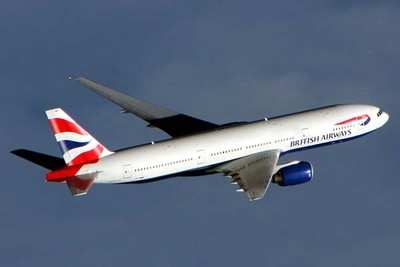Investigators Still Have Not Determined Cause
One would think the January 2008 landing crash of a British
Airways Boeing 777-200 would present something close to the ideal
scenario for an aviation accident investigator: a largely-intact
airframe, 152 survivors to give their accounts of the mishap (which
resulted in no fatalities,) and even additional information from a
dedicated crash recorder installed by the airline, on top of the
data recorders mandated by federal authorities.

Well, one would think. Five months after an accident that caught
the world's attention -- and sent shivers down the spines of
operators of the erstwhile widebody, which prior to the January 17
mishap had never suffered a catastrophic accident -- investigators
still have no solid leads why the aircraft's twin turbofans spooled
down on approach to Heathrow, causing the jet to pancake about
1,000 feet short of the runway.
The Washington Post reports British authorities aren't saying
much about the accident, despite initial speculation -- fueled in
part by the Air Accident Investigation Board's own reports -- the problem was caused by ice or some
other obstruction in the airliner's fuel system. That
scenario remains the odds-on favorite, though no one is 100 percent
certain.
"This is a great mystery, and I never expected this accident to
be this difficult to solve, given the state-of-art tools on the
plane and the fact that the aircraft was largely intact," said Bill
Voss, president of the Flight Safety Foundation. "This has
potentially broad implications that go beyond this one airplane,
depending on what they find."
With a lack of new details -- and no one from British
Airways, Boeing, or enginemaker Rolls-Royce inclined to give
additional information -- the industry has questioned whether the
jetliner's extended time flying over a desolate part of Siberia,
through temperatures as low as -49 degrees Fahrenheit, caused ice
particles to form in the fuel.
Authorities reply that shouldn't have been of particular
concern, however. The fuel's freezing point was -70 degrees, and
after the crash investigators determined the fuel the plane
received in Beijing was within specifications in regards to foreign
particles, or matter that may have raised the freezing point. Many
point out ice particles also would have melted as the jet descended
-- and besides, both engines should have been drawing fuel from
separate tanks.
One initial concern -- that the 777 suffered a failure of its
engine-control or flight computers -- was also quickly proven
false, as investigators found the aircraft's autopilot properly
commanded both engines to increase power, but the engines were
starved of fuel.

The question "what if" has also cropped up in some circles --
what if the plane's engines had failed not so close to Heathrow...
but somewhere over Siberia, near the Arctic Circle and far from
emergency airports. Like most widebody twin-engine airliners, the
777 is certified under Extended-range Twin-engine Operational
Performance Standards, or ETOPS -- a set of standards governing the
maximum distance it may operate away from alternate landing sites,
in the event of engine failure.
The 777 has been certified to the longest ETOPS range
allowable... but the standards are based on the failure of one
engine, not both, which before January 17 many believed to be
near-impossible.
 ANN's Daily Aero-Linx (05.02.24)
ANN's Daily Aero-Linx (05.02.24) ANN's Daily Aero-Term (05.02.24): Touchdown Zone Lighting
ANN's Daily Aero-Term (05.02.24): Touchdown Zone Lighting Aero-News: Quote of the Day (05.02.24)
Aero-News: Quote of the Day (05.02.24) ANN FAQ: Contributing To Aero-TV
ANN FAQ: Contributing To Aero-TV NTSB Final Report: Cirrus Design Corp SR20
NTSB Final Report: Cirrus Design Corp SR20




